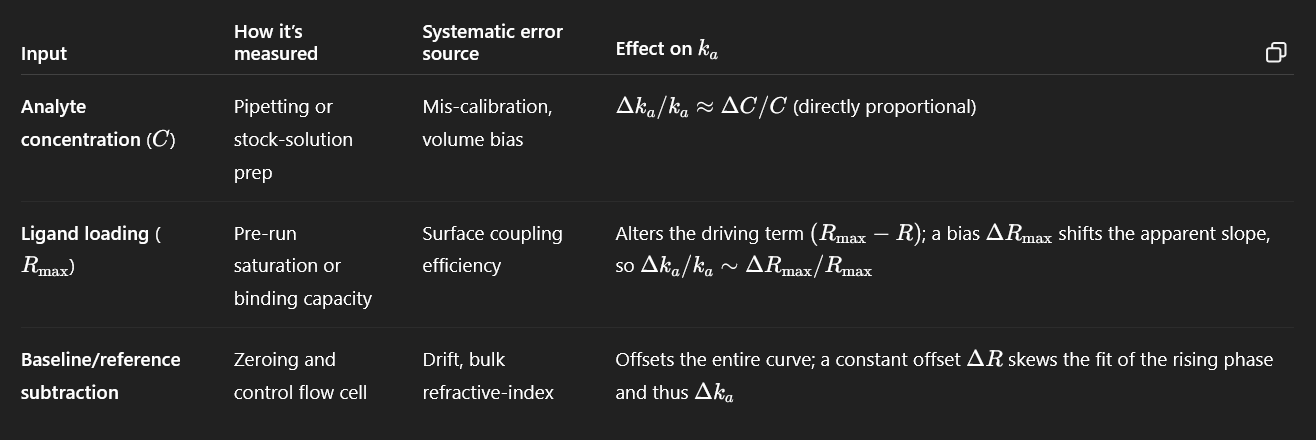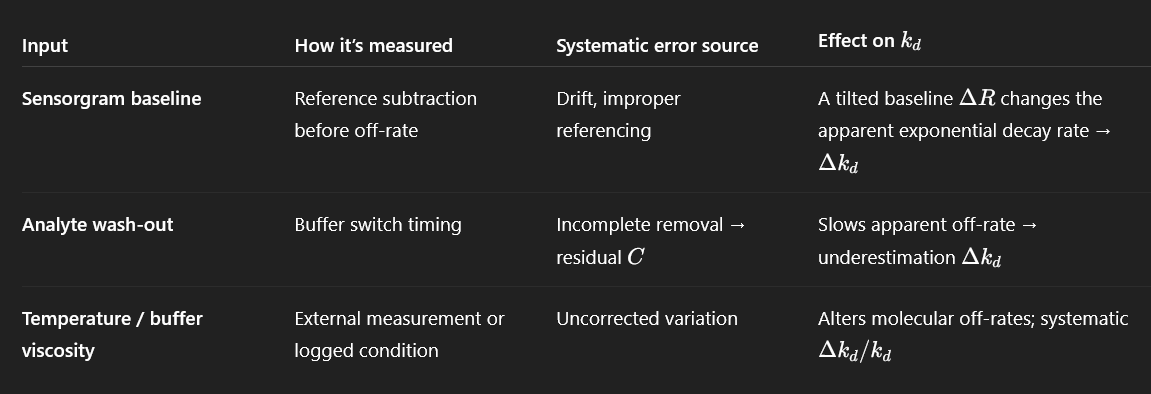Old Notes:
- best method is to estimate the and then attempt to estimate
Potentially:
Currently immeasurable effects on estimation
- Mass Transfer: If diffusion to the interaction surface is slower than the rate of binding to the ligand, the diffusion rate becomes a bottle neck
- Two methods for determination of k_t and k_m which affect response
- Mass transport lowers the estimated k_a value
- Solving this includes reducing the surface density of ligand (ensures more local ligand is available for continual binding), or in SPR, increasing analyte injection flow rate (improves convection)
- Source
- High ligand density on sensor: rebinding of analyte to ligand on sensor may cause an underestimated k_d value
The systematic error of is numerically based upon:
- systematic error of analyte concentration, C
- systematic error of estimated ,
ChatGPT suggests multiple factors

Concerns:
- Based on previous literature review is commonly fitted via nonlinear regression (see Old SPR Paper with Derivations.pdf), so does that omit both ligand loading and baseline drift (both of which are associated to )?
- Answer: is generally fitted in most BLI/SPR analysis programs, because it requires high analyte concentrations and longer injection times.
- In certain cases for SPR, the has a theoretical value based upon the density of ligand on the sensor and molecular weights - in such cases, is a fixed value = ERRORS WILL PROPAGATE IN THIS CASE because factors such as baseline draft or improper ligand loading will cause systematic errors in the responses produced.
The systematic error of is numerically based upon:
- There are no variables which are being substituted in the equation, and are both fitted for, via nonlinear regression
Chatgpt suggests the following non-numerical factors:
